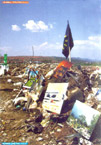
Self-determination
Samoodređenje
Keywords: serbian government; Kosovo; independence; Russia;
More...
Keywords: serbian government; Kosovo; independence; Russia;
More...
Keywords: Serbia; Kosovo; Slobodan Milosevic; independence;
In recent months, and years, we have been witnesses to revival of old and generation of new myths about Kosovo: not only in the 19th, but also in the 20th and now at the beginning of the 21st century Kosovo has again taken the vital position in the fate of Serbian society and each individual within it....
More...



Keywords: Serbian constituent assembly; Serbia; European Union; state; Kosovo;
In order to understand political developments in Serbia - particularly the attitude of political elite toward the constitution - in the early years of the 21st century, one should bear in mind that the country has had two hundred years of constituent fiascos...
More...
Keywords: USA; Serbia; Kosovo; protests;
The following words are dedicated to fundaments of logical reasoning in Serbian politics, but not only in politics. There are no "political emotions" that are not a political category at the same time, whatever Serbian politicians may "feel" for their mythical or promotional purposes...
More...
Keywords: privatization; workers;
More...
Keywords: Belgrade; cultural project;
More...



Keywords: USA: elections; Barack Obama;
More...Keywords: history of Estonian art history writing; Sten Karling
The article focuses on the history of Estonian art history writing, examining the older written scholarly heritage of Sten Karling. The author analyses the art theoretical ideas that influenced Karling's research, and discusses Karling's texts and activities as the basis for art history studies in Soviet Estonia.
More...Keywords: Estonian Art history; Armin Tuulse 100
The present collection of 'Studies on Art and Architecture' contains presentations given at the annual conference of the Estonian Art Historians' Association in 2007, as well as some complementary articles that were added at the suggestion of the author of this introduction, as they were related to the general subject of the collection. The question that forms the subject, 'Quo vadis, art history?', has for some time been seriously looked into in the international arena of our profession.
More...Keywords: history of Estonian art history writing; Sten Karling
The article focuses on the history of Estonian art history writing, examining the older written scholarly heritage of Sten Karling. The author analyses the art theoretical ideas that influenced Karling's research, and discusses Karling's texts and activities as the basis for art history studies in Soviet Estonia.
More...Keywords: Estonian medieval archtecture; castle
In the 1930s, Armin Tuulse's research was mainly focused on castles. He summed up the results in his doctoral dissertation on Estonian and Latvian castles, published in 1942. The book is constructed on the typology of castles. Research of the following decades has revealed new data on Estonian castles, complementing and sometimes correcting Tuulse's views. But, on the whole, his book has maintained its importance.
More...Keywords: New Art History; Estonian Art Writing
More...Keywords: Middle Ages; Church Architecture; Methods of Art History
This article analyses Armin Tuulse's evolution into a scientist in Estonia in the 1930s and his post-war scholarly activities in Sweden. The important problems of the article include disputes of German and Swedish art historians on different cultural regions, searches for originality in Estonian art and a study of the methods of medieval sacral art.
More...Keywords: Middle Ages; iconography; stone carving; methodology
This article discusses three stone reliefs from sixteenth-century Tallinn. The reliefs were previously treated by four eminent Estonian art historians - Sten Karling, Armin Tuulse, Mai Lumiste and Helmi Üprus. Their modes of seeing and describing the reliefs, evaluations of artistic quality and hypotheses concerning the meaning of the motifs depicted are compared. Clearly these are very different and even contradictory, depending on the researchers' personal tastes and methodological tools, as well as the historically determined ideological background at the time of publication. Contemporary ways of approaching the artifacts in question and interpreting their iconography are proposed by the author.
More...